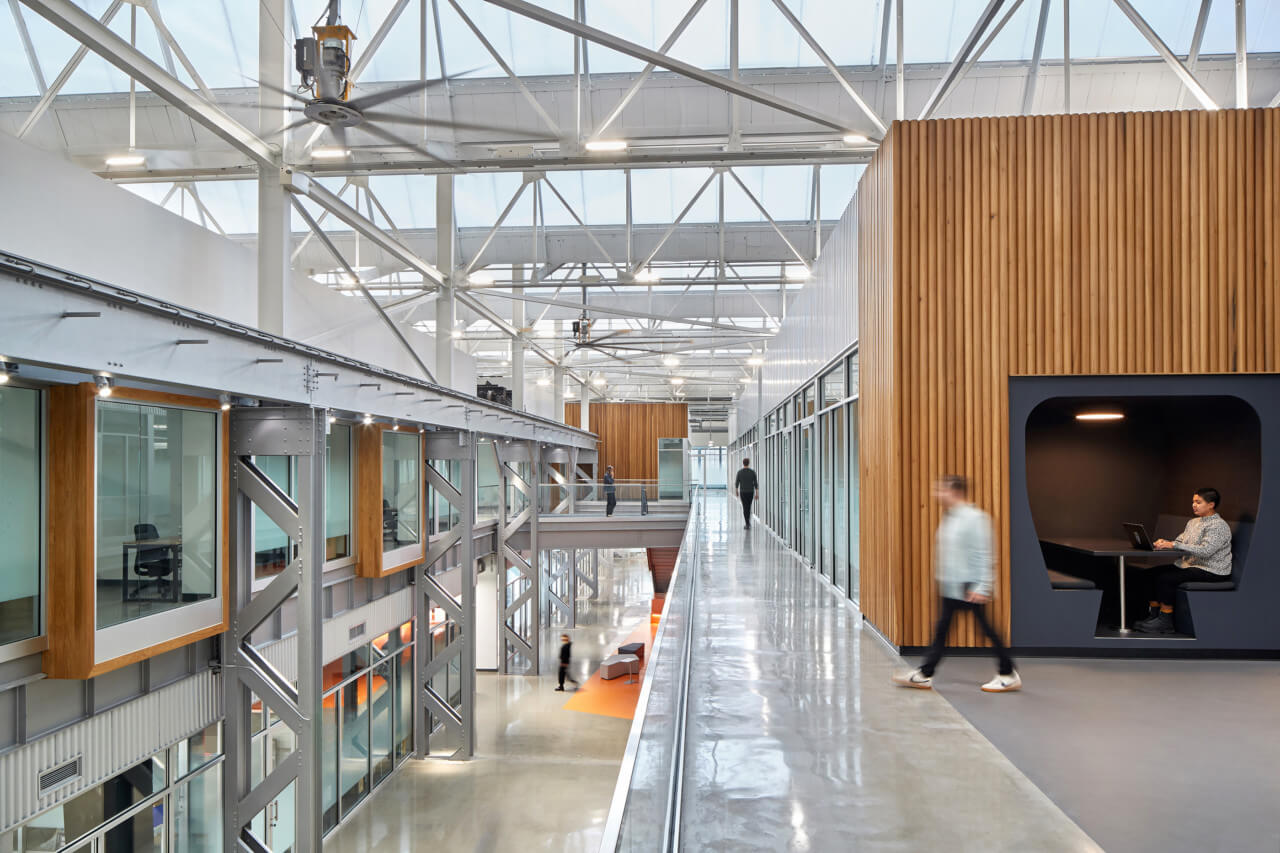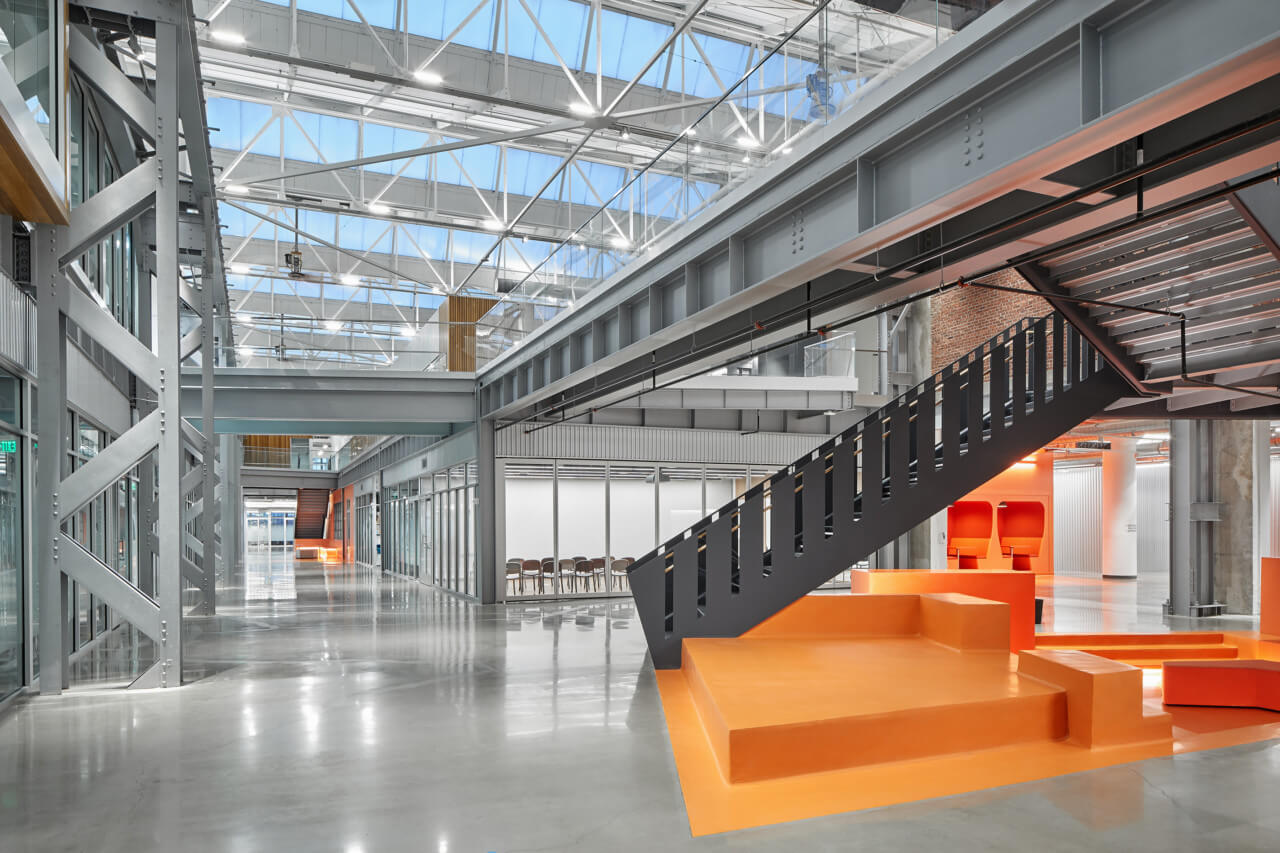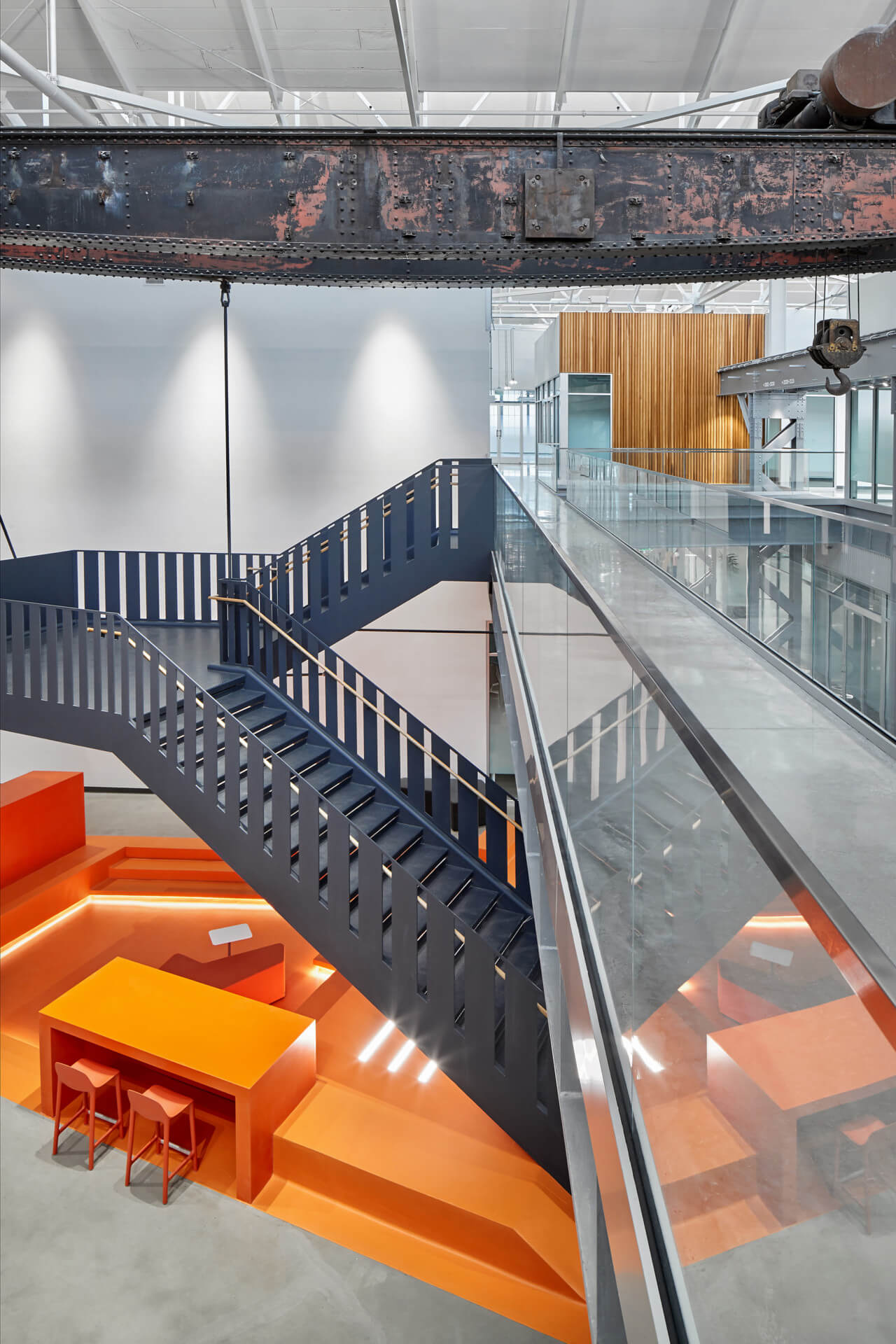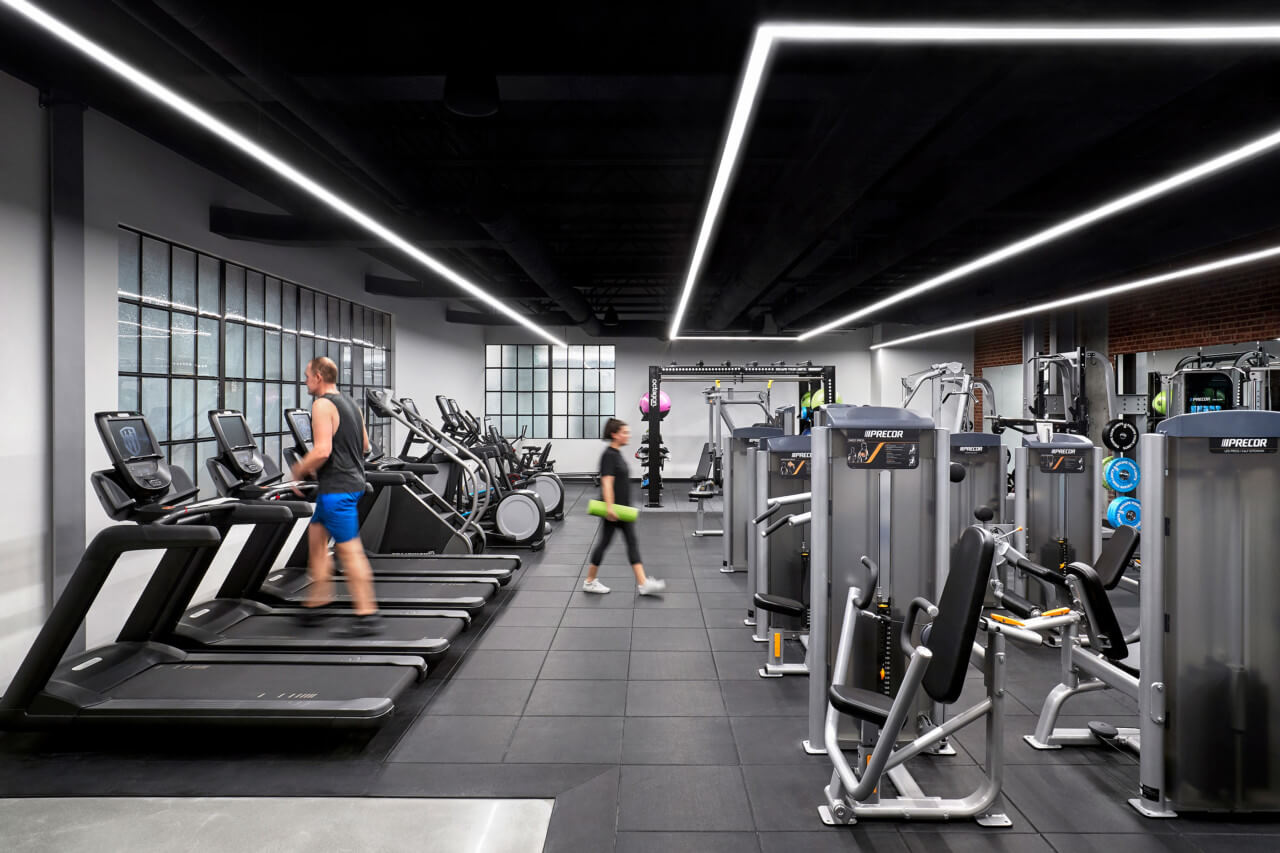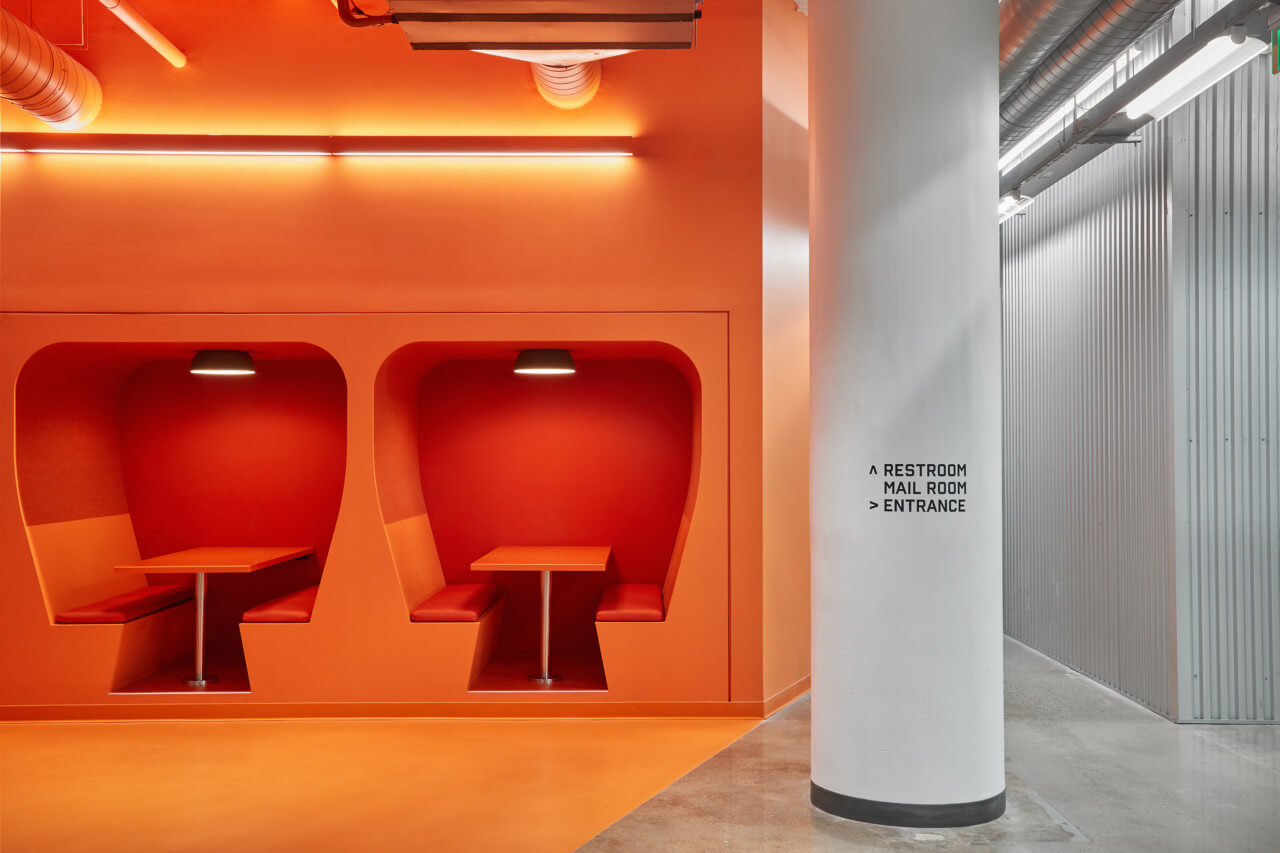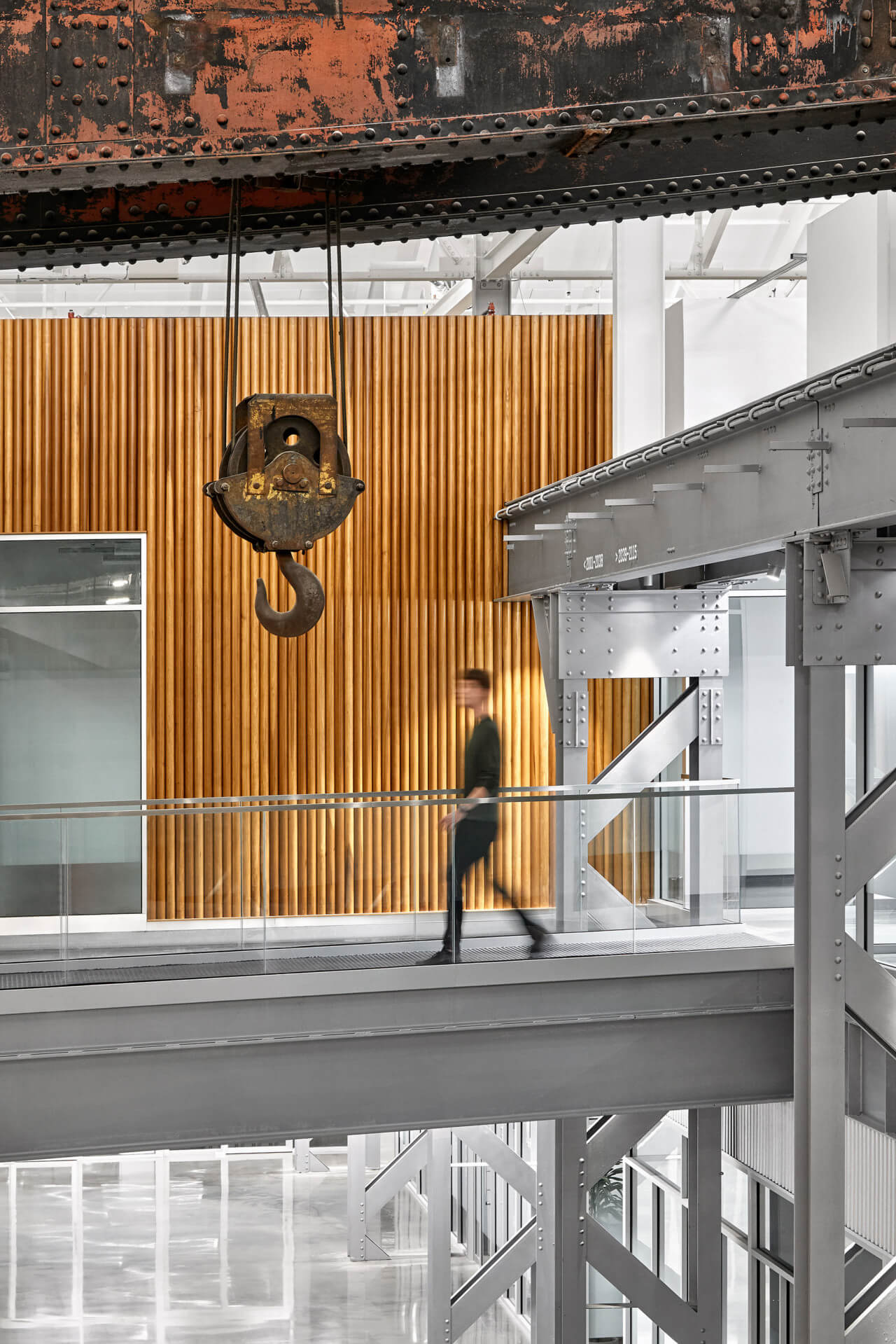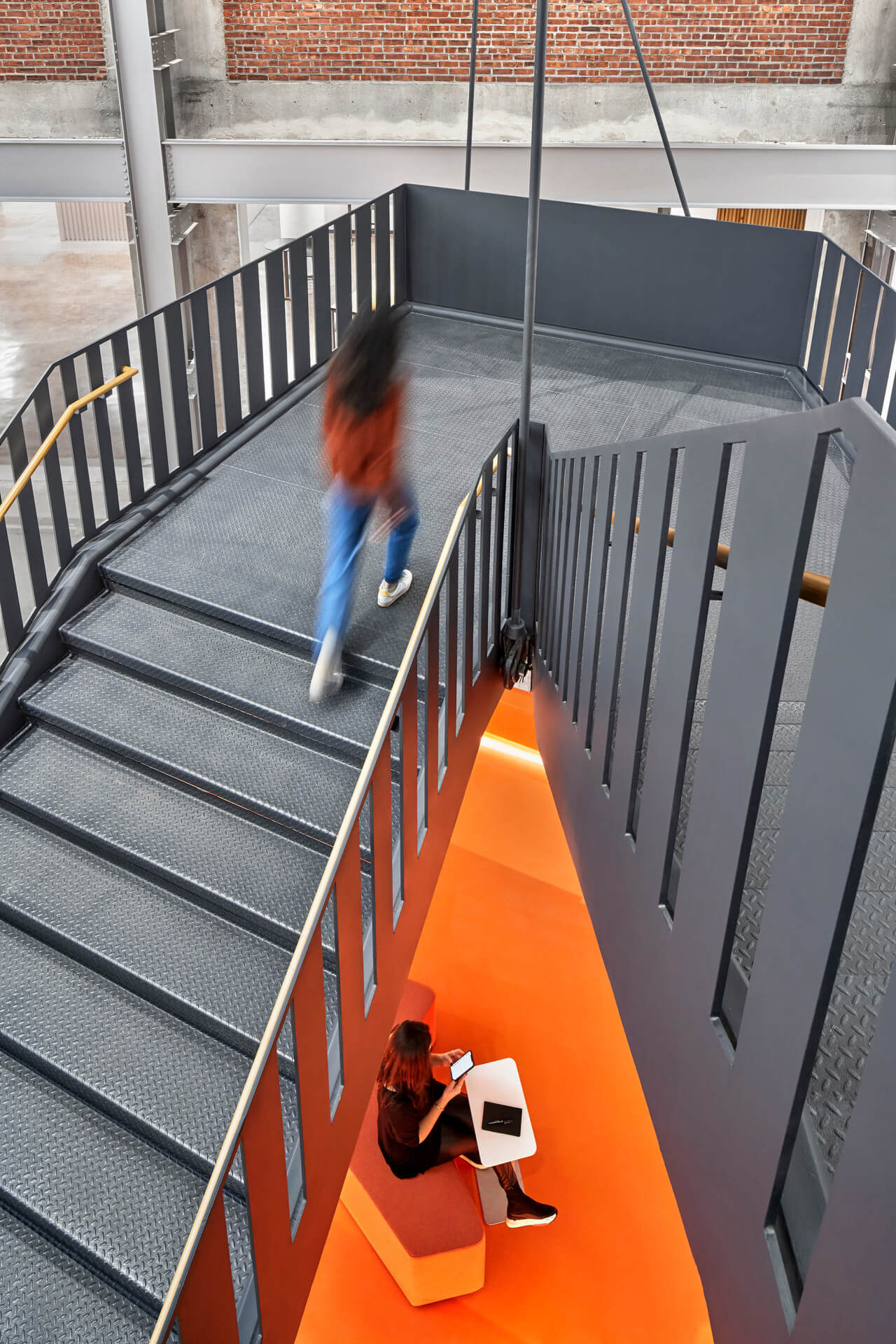In wartime South Kearny, New Jersey, on land that once belonged to the Federal Shipbuilding and Dry Dock Company, some 35,000 workers assembled ships at a quick clip. And not just cutters, cruisers, and gunboats—Federal produced a record number of destroyers over its three decades of operation before shutting down in 1948. “They were able to build a destroyer from scratch in 130 days,” said architect Graham Clegg. “Ridiculous scalability. We talk a lot about scalability in architecture, but the design process would take longer than that.”
Clegg, a principal of STUDIOS’ New York office, also marvels at the gantry buildings in which these ships were built and later dismantled. (As war production came to a halt, the site became a scrapyard.) In 2016, his team was brought on by owner Hugo Neu to convert the 130-acre property and six of its blocks into a commercial office complex called Kearny Point. STUDIOS would draw on existing plans developed by the New York firm WXY architecture + urban design, as well as an architecture vocabulary WXY had set in place at Building 78, the first structure on the site to be converted.
In early 2020, STUDIOS and WXY completed work on the 90,000-square-foot Annex, which abuts the larger Building 78. Like its neighbor, the Annex features bright interiors and a restrained palette of corrugated metal and glass, which it supplements with wood-dowel walls and plate steel. The colorful booths WXY designed for the common spaces in Building 78 are reproduced next door, only set flush with the adjoining walls. On the ground floor, an intense orange marks out a row of these enclaves, a flourish that gets picked up in the shared kitchen and in a conversation pit beneath the central staircase.
Unlike Building 78, which previously functioned as a warehouse, the single-story Annex was “essentially an outdoor building,” WXY founding principal Claire Weisz said. To raise the space to the energy code required of offices, the structure had to be refitted with a new window system and its perimeter walls reinforced with insulation. The original sawtooth skylights were uncovered, and the glass of the clerestory dormers replaced with higher-performance polycarbonate. “Most buildings of this vintage, if used for distribution, they would just close in all the clerestories,” she said. “By putting [the Annex] to this use, you are able to restore all that natural light.”
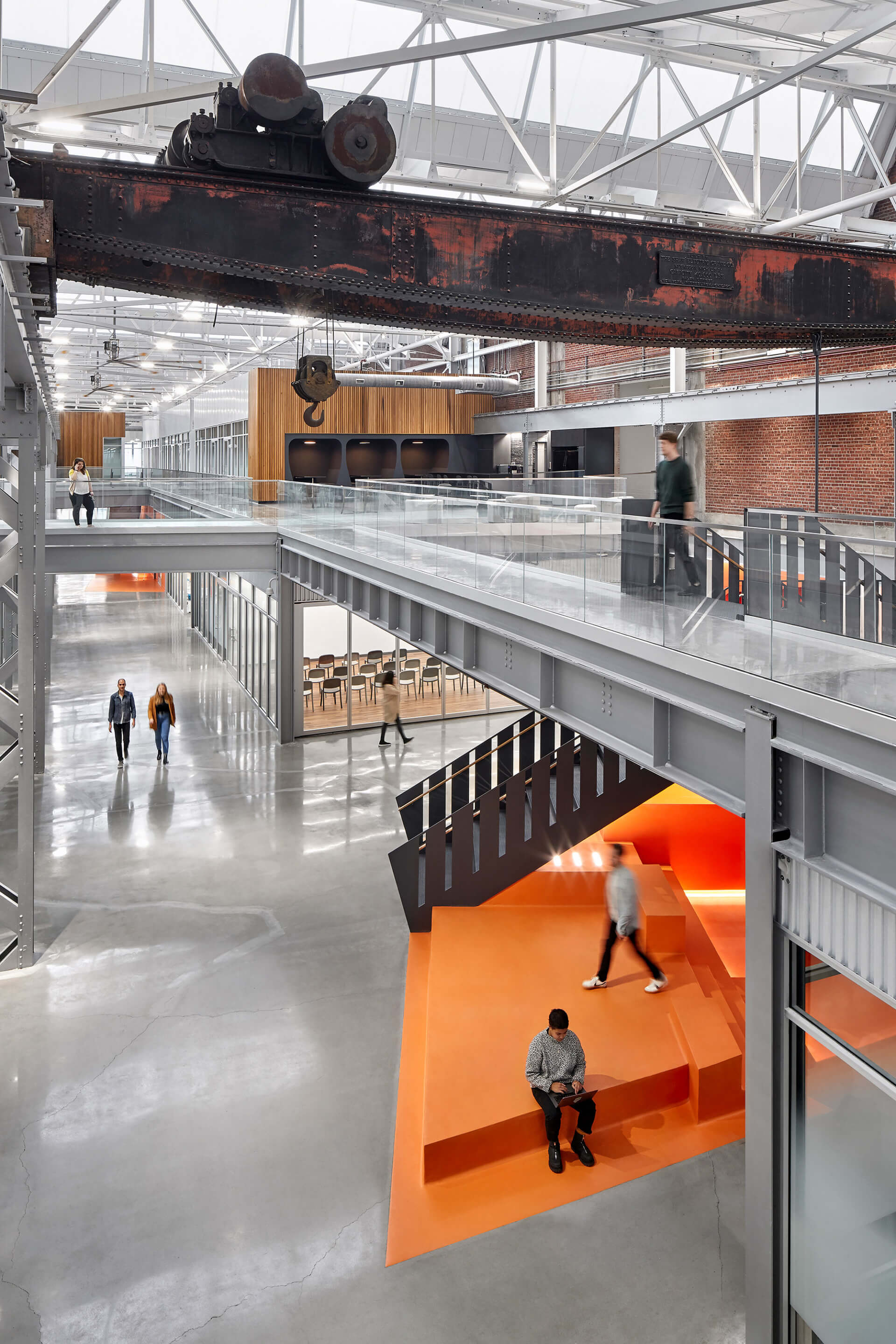
When STUDIOS became involved in 2016, it inserted a second story to increase the area of leasable workspace but carved a void in the floor plate, which allowed daylight penetrating the clerestories to reach the offices below. That would appeal to prospective tenants, larger outfits than the 150 or so small companies that occupied Building 78. These anchor tenants were likely to need additional space over time, meaning that the office fit-outs had to be “scalable and flexible,” Clegg said. Partitions needed to come down easily, but the building systems, such as the “state-of-the-art green HVAC,” which have been a boon for leasing during COVID-19, had to stay put.
Because the upper-story offices were liable to grow, they threatened to crowd out the mezzanine, making connections to the building’s common areas all the more important. “Getting those circulation paths was critical,” Clegg said, referring to the three bridges that stretch across the upper level and the scissor staircase that anchors the atrium. “The client kept wanting more and more office space, but we had to balance it, to ‘right-size’ it.”
Early on in the design process, Clegg’s and Weisz’s teams charretted to ensure continuity between Building 78 and the Annex. The result is more than a shared ambiance. WXY had suggested removing the brick walls on either side of a bank of freestanding freight elevators. The infill brick, which separated the two buildings, wouldn’t be missed, Weisz said. “We had little conference rooms between the elevators; we did all kinds of things with those in-between spaces.” In the end, they settled on a kitchen-and-bar setup that connects Building 78’s lobby to the Annex’s atrium.
That interconnectedness is a feature of the entire master plan. STUDIOS has completed retrofitting studies for Buildings 54 and 44 (both have footprints larger than a typical Manhattan block) as well as Buildings 100 and 104. Landscaping—including a grassy amphitheater—and amenities will help knit the campus’s individual pieces together so that, in Weisz’s words, “you’ll feel like you’re in a real district, a microcosm.”






